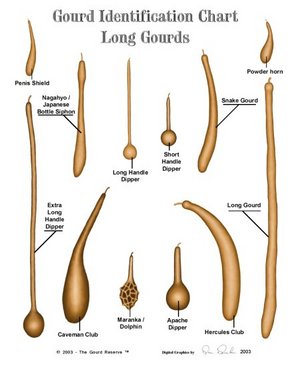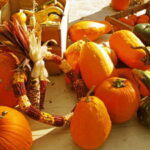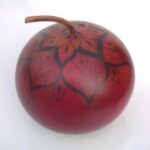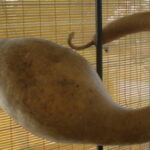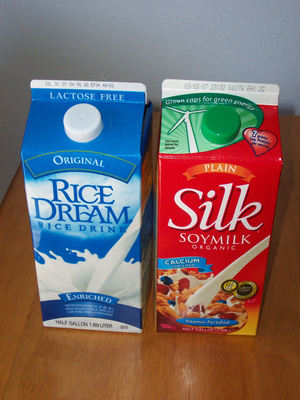Gourd identification is important. But with so many varieties of gourds, it can get confusing when people are looking for a specific shape to create something, or to envision what someone is referring to when they are trying to describe a particular gourd. Obviously, like anything else in life, this need for description gave rise to the naming of gourds. While most lay terms for gourds are not written in stone, and many of the gourds have numerous names, we did create a gourd chart using some of the most common names as a way for people to identify the gourd they are looking for, or for ordering seeds, etc.
The first step in gourd identification is separating cucurbits from lagenaria’s, this chart separates lagenaria’s from cucurbits. Cucurbits are not included on this chart as cucurbits are not generally considered long lasting or hard shelled, where as the Lagenaria gourds are thick shelled and last a long time like wood does. The purpose here is identifying lagenaria gourds.
Most of the gourd names were created based on either their normal function or based on the shape inspiring a name for it. A few gourds are named after their place of origin or from some other aspect of the gourd.
Gourd identification based on function:
The short handle Dipper Gourd
The Long Handle Dipper Gourd
The Extra Long handle Dipper Gourd
Apache dipper, (combined usefulness and point of origin)
Penis Sheath
powder horn
canteen
Water Jug
African Wine kettle, (another combined name)
Bushel Basket
African Bushel Basket
Mexican Bottle
Gourd identification based on shape description:
Snake Gourd
Long Gourd
Hercules Club
Caveman Club
Gooseneck
Banana
Apple gourd
Mini Pear
warty
Canon Ball
Basket Ball
The above are some of the most common gourds, some more and perhaps more interesting names for some of the gourds are, for example the Japanese Gourds the Sennari and the Hyakunari gourds. Sennari means thousand gourd, meaning that with proper treatment and pruning, a thousands gourds can be harvested form one vine. Hykunari like the Sennari was named for 100 gourds. Chiyo-ni’s haiku: “Hyakunari ya tsuru hitosuji no kokoro yori” which translated means: a hundred gourds – from the heart – of one vine.
On the other hand the Maranka, a member of the dipper family but with ridges, is also known as the Dolphin Gourd, Maranka, alligator gourd, Dinosaur, monkey gourd, and Klingon Club, and many other names. However it seems the most common shared name between different area’s of the country is Maranka thus giving this name somewhat of a standard.
This gourd identification chart is also available for free at The Gourd Reserve by simply copy and pasting the code provided in the gourd identification chart page.
Gourds are an artistic medium and gourd identification is important, so if you would like to learn more about gourds, please visit The Gourd Reserve, with over 800 pages of gourd related information and artwork. You can also find more short articles on gourds and growing gourds here on my AC producer page.
